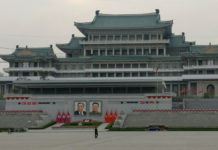March 08 is now recognized as International Women’s Day honoring working women and women’s struggle and originated in honor of two all women strikes which took place in the U.S.
 Strike 1: On March 8, 1857, garment women workers in New York City marched and picketed, demanding improved working conditions, a 10 hour day, and equal rights for women. Although, their march was broken up by the police.
Strike 1: On March 8, 1857, garment women workers in New York City marched and picketed, demanding improved working conditions, a 10 hour day, and equal rights for women. Although, their march was broken up by the police.
 Strike 2: 51- years later, on March 8, 1908, their sisters in the needle trades honored the 1857 march, demanding vote, and an end to sweatshops and child labor. The police were present on this occasion too.
Strike 2: 51- years later, on March 8, 1908, their sisters in the needle trades honored the 1857 march, demanding vote, and an end to sweatshops and child labor. The police were present on this occasion too.
 In 1910, a world-wide socialist party congress, German socialist Clara Zetkin proposed that March 8th be proclaimed International Women’s Day, to commemorate the US demonstrations and honor working women the world over. Zetkin, due to her strong socialist activities and revolutionary work was considered a grave threat to the European governments of her time; the Kaiser called her “the most dangerous sorceress in the empire.”
In 1910, a world-wide socialist party congress, German socialist Clara Zetkin proposed that March 8th be proclaimed International Women’s Day, to commemorate the US demonstrations and honor working women the world over. Zetkin, due to her strong socialist activities and revolutionary work was considered a grave threat to the European governments of her time; the Kaiser called her “the most dangerous sorceress in the empire.”
 The most famous of the early strikes took place at the Lowell cotton mills in Massachusetts, where young women worked 81 hours a week for $3, 1 ¼ of which went for room and board at the Lowell company boarding houses. In 1834, after several wage cuts, the Lowell women walked out of the company, only to return several days later at the reduced rates; Although they were courageous, the company had the power: a poor record or a disciplinary action could lead to blacklisting. Later in 1836 they walked out again, singing through the streets of the town:
The most famous of the early strikes took place at the Lowell cotton mills in Massachusetts, where young women worked 81 hours a week for $3, 1 ¼ of which went for room and board at the Lowell company boarding houses. In 1834, after several wage cuts, the Lowell women walked out of the company, only to return several days later at the reduced rates; Although they were courageous, the company had the power: a poor record or a disciplinary action could lead to blacklisting. Later in 1836 they walked out again, singing through the streets of the town:
Oh, isn’t it a pity such a pretty girl as I
Should be sent to the factory to pine away and die.
In l844, Lowell Female Labor Reform Association formed with the prime demand being the ten hour day. The leadership and activity of this union is credited with initiating some of the earliest reforms in the conditions of the textile industries.
 In the aftermath of Civil War, widowhood and general hard times forced thousands of women into the labor force, which caused panic and hostility on the part of men, thereby forcing women to be excluded from most of the national trade unions. Not wanting to be left behind, and wanting equality, they formed their own, including the Daughters of St. Crispin, a union of women shoemakers and the like, by woman cigar makers, umbrella sewers, and printers, as well as tailoresses and laundresses.
In the aftermath of Civil War, widowhood and general hard times forced thousands of women into the labor force, which caused panic and hostility on the part of men, thereby forcing women to be excluded from most of the national trade unions. Not wanting to be left behind, and wanting equality, they formed their own, including the Daughters of St. Crispin, a union of women shoemakers and the like, by woman cigar makers, umbrella sewers, and printers, as well as tailoresses and laundresses.
For thirteen weeks, women between 16 and 25 years of age picketed daily, clubbed by police and carried off in “Black Maria” police vans; even the courts were biased charging , “You are on strike against God and Nature, whose prime law it is that man shall earn his bread in the sweat of his brow. You are on strike against God.” This elicited a cablegram from George Bernard Shaw, who with other Europeans was following the course of U.S. labor history. He wrote: “Delightful. Medieval America always in intimate personal confidence of the Almighty.”
The strike was ultimately stopped, as settlements were made shop by shop, but the talent and endurance of the women made it impossible for people to claim that labor organizing was for men only. But, one year later the infamous Triangle fire occurred- trapping women on the upper floors of the buildings, while bolting doors and windows, and setting up the building on fire- claimed l46 lives. The employers were tried; settlement were made to the families of the dead women for $75 per death.
 Rose Schneiderman, a Garment Workers organizer, berated the community for supporting the law and institutions that made such tragedies possible. “I know from my own experience that it is up to the working people to save themselves,” she proclaimed. “The only way they can save themselves is by a strong working-class movement.”
Rose Schneiderman, a Garment Workers organizer, berated the community for supporting the law and institutions that made such tragedies possible. “I know from my own experience that it is up to the working people to save themselves,” she proclaimed. “The only way they can save themselves is by a strong working-class movement.”
This has been a fraction of the history of American working women to inspire an International holiday. Russia first celebrated March 8 after the Revolution; it is not often recognized that one of the major sparks of the Russian Revolution was a mass strike in 1917 by Russian women textile workers. Chinese women began celebrating in l924, paralleling a strong women’s movement in the Chinese Communist party. When the women’s liberation movement began in the U.S. and Britain, Women’s Day was rediscovered and revived as a feminist holiday.
A good cure for depression is to read a chapter of Flynn’s autobiography or reread the account of Mother Jones terrorizing scabs and participating in the 1919 steel strike at the age of 90.But what we all have to remember is that these heroines and revolutionaries were all ordinary women- as ordinary as we are- they endured, they struggled, they failed, they tried and they won- they were ordinary, but they all realized the need to be a combined force, to rise from ordinary to extra-ordinary. They brought about a revolution to which we women of this century have to be grateful , for it was these women that we are now able to stand up and have our own career; These are the women who in the famous Lawrence textile strike carried picket signs reading “We want Bread and Roses, too”, symbolizing their demands for not only a living wage but a decent and human life.
James Oppenheim’s song “Bread and Roses” is an inspiration from the Lawrence Textile Strike.
As we come marching, marching, in the beauty of, the day
A million darkened kitchens, a thousand mill lofts gray
Are touched with all the radiance that a sudden sun discloses
For the people hear us singing, Bread and Roses, Bread and Roses
As we come marching, marching, we bring the greater days
The rising of the women means the, rising of the race
No more the drudge and idler that toil where one reposes
But a sharing of life’s glories, Bread and Roses, Bread and Roses
https://youtu.be/LWkVcaAGCi0
By: Archa Dave




























